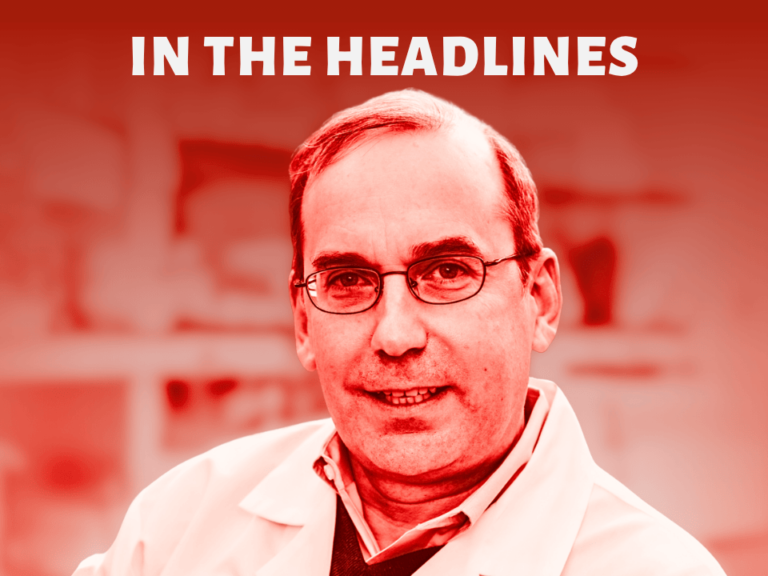Directors of the first three NCI-designated Comprehensive Cancer Centers are learning from the past, starting with the National Cancer Act, and mapping an equitable future for oncology.
The Cancer History Project July 29 convened panelists Candace S. Johnson, president and CEO of Roswell Park Comprehensive Cancer Center, Craig B. Thompson, president and CEO of Memorial Sloan Kettering Cancer Center, and Peter WT Pisters, president of MD Anderson Cancer Center, during a two-hour Zoom session moderated by CHP co-editor Otis W. Brawley.
“50 years later, after we look at what many refer to as Nixon’s War on Cancer, it’s time for an after-action report, where we sit back and assess where we’ve come from, what we’ve done, and that’s how we figure out where we’re going in the future,” Brawley, Bloomberg Distinguished Professor of Oncology and Epidemiology at Johns Hopkins University, said during the free virtual panel.
After the National Cancer Act of 1971 was enacted, these three distinctive institutions “got designation without even applying,” said Johnson.
“I really believe one thing that should be emphasized today is that, by starting out with three exemplars, and then by putting into place a set of criteria, [the comprehensive designation] became an aspirational goal,” Pisters said.
“Our center grant came because we had 54 funded NCI grants. And the NCI said, ‘You’re driving us crazy, because you all want the same resources,’ and made us bundle them all,” Thompson said. “We complained it was so much paperwork. We think about the paperwork today—they were complaining in 1964 there was too much paperwork. And the NCI, at least according to our records, threw up their hands and said, ‘Fine, put them all in one center grant.’”
A full transcript and video of the panel are available here, through the Cancer History Project.
“We don’t want to lose our past”
The way the three institutions were founded—and funded—couldn’t be more different.
“In 1898, you were more likely to die of an infectious disease than cancer, perhaps, but [Roswell Park founder and namesake] really saw a real need for this,” Johnson said. “And he also thought, and this was very revolutionary for the time, that the government should support this research.”
Memorial Sloan Kettering was founded in 1884 as a private hospital, with philanthropy, Thompson said. “It was actually built with round rotundas because they weren’t really sure that it wasn’t a virus or a bacteria, so they built a hospital with round rooms so there were no corners for microbes to lurk in.”
MD Anderson, however, was founded in 1941 by the the Texas legislature:
“The legislature at that time voted to create a state cancer hospital that would be devoted to research to cancer treatment, and positioned that cancer hospital under the jurisdiction of the University of Texas and its board of regents,” Pisters said. “And the hospital, as you alluded to Otis, received tremendous support from Monroe Dunaway [Anderson], who was a cotton merchant.”
Talking about the value of history, Johnson held up a carved wooden box.
“This is a tobacco box that was Roswell Park’s,” she said. “It sits on my desk. And I don’t use it for tobacco anymore.
“We don’t want to lose our past,” she added.
All three centers take preserving their history seriously. Roswell Park has a historian on staff, and MD Anderson and MSK both maintain extensive archives.
Pisters expressed concern about preserving our present, too.
“A lot of old history can really be put together with memos and letters that are in paper files. And now we’ve moved to a digital environment—I’m completely paperless myself. And every now and then I’m wondering, how is the history of this period ever going to be documented? Because it’s in a bunch of deleted emails, it’s on a bunch of servers,” Pisters said.
“How are we going to take the archivists of the modern era and help them to chronicle today’s history?”
A “devilish” question
“For us, team-based science started in 1960,” Thompson said. “They [Alfred Sloan and Charles Kettering] both believed the research institute, a hospital, had to be separated. And it took us until 1960, 15 years of separate governance, but overlapping governance, to realize they were best together.”
Today, do matrix centers benefit even more with regard to team-based science?
“This is sort of devilish of me,” Brawley said. “What’s the advantage of a matrix center versus a center that’s freestanding?”
“The clear benefit of the matrix environment,” Pisters said, “is that you’ve got a rich ecosystem, and you can be a beneficiary of the talent and the resources, the infrastructure, at the university, and that can foster tremendous collaboration and lots of opportunities.”
Said Thompson, “Academic medical centers that are with a matrix cancer center have one tremendous advantage that we don’t have, and that is a primary care network,” Thompson said.
However, “I think all of us on this panel would say the advantage of a freestanding center is you have more control,” Johnson said.
Pisters agreed. At a freestanding center, “we can shed ourselves of many of the funds flow issues, the internal politics associated with that, and we can focus on making cancer history,” Pisters said.
“And that, really, is a lot of the special sauce that exists in independent cancer center environments, where you’re freed from a lot of the politics, funds flow, and you can focus on what’s important.”
The panel discussion demonstrated that oncologists are asking some of the same questions they did in 1971.
“The biggest debate in Congress [in 1971], if you read those records, was whether the new money should be a contract or a grant,” Thompson said.
“And thank goodness, the scientific community stood up and said, ‘It cannot be a contract. This is not just delivering this number of doses. We need to investigate the science of this and to have those investigator-initiated ideas, and a way to do that.’ It’s a time where that debate’s happening again.”
Funding, however, remains a key concern.
“I’m not sure we’re always as effective lobbyists for getting more money from the federal government for the NCI,” Johnson said. “I think we need to be more bold, and maybe the general public, especially coming out of COVID, where research is so important, can help us with that.”
Said Pisters, “Now, we’re in an era where we can get a COVID vaccine generated and into people’s arms in six months. These are unbelievable triumphs of science that the general public is becoming much more aware of, and therefore, hopefully, continuing the long-standing, bipartisan support for NIH funding.”
Serving catchment areas, and beyond
Community outreach and engagement is a “uniquely American” concept, Pisters said.
Countries with single-payer healthcare systems and “have better health outcomes than the United States use a jurisdictional approach to cancer prevention and screening,” he said. Whereas the U.S. created COE “as a best practice, or as an adaptation, to try to extend prevention and screening benefits, as well as anti-cancer living benefits, to larger populations, not just those who enter our organizations.
“So, it would be important for us at a policy level to learn lessons from other countries that are, frankly, better at this than we are,” he said.
The U.S. also has a unique challenge with underserved populations that do not trust their health care systems to come up with solutions that are in their best interests.
“I applaud the NCI for focusing on this because it, and quite honestly, many of our efforts that we’ve done in cancer, really helped us to reach folks for COVID vaccines because they trusted us, because we’ve spent a lot of time in trying to develop trust in many of these groups that don’t trust us,” Johnson said. “It’s helped us in so many ways, education, screening, and so forth.”
Outreach efforts can be bolstered by strong partnerships, both locally and as part of the global community.
“The critical things that we’ve seen, that we uniquely can do, are some of our aspects of immigrant health and cancer disparities,” Thompson said. “We’ve used the UN, a unique resource we have, to do reverse translation.”
Speaking of global outreach, Pisters said, “we reached the conclusion that single institutional efforts are highly inefficient. And our resources are probably best allocated in partnership with the WHO, with UICC, where we can come together and take full advantage of their talent, their infrastructure, their footprint, in some of these areas of the world where there’s massive unmet need.”
A diverse workforce is essential for community outreach and engagement, Johnson said.
“One of our faculty members is a member of the Seneca tribe, so we have a big study and looking at obesity and trying to make connections in the indigenous population, and I want to tell you, it’s a whole other level of mistrust, if you will. And so we’ve made great strides in helping to, in our screening programs, to get these folks in,” she said.
“I don’t think it’s enough just to go into our community and do the kinds of community engagement kind of things that we’re doing, as it relates to [Cancer Center Support Grants],” Johnson said. “I think that the way we’re going to really make connections is we have to have more physicians, nurses that are African American, or indigenous population, or LGBT. We need to be more.”
Thompson agreed. “We needed to understand that we don’t have enough diversity in our senior ranks, particularly of our physicians and our senior researchers. We are not as diverse as the community we serve and we need to do better.”
MD Anderson is taking steps to build diversity, equity, and inclusion into the cancer center’s core strategy, Pisters said.
“Diversity and inclusion are not the same. Diversity is a descriptive fact, inclusion requires acts—and deliberate acts, and strategy,” Pisters said. “And that’s the conversation that we’ve had as we embark on a big institutional effort on DEI.”
“The last frontier”
Where is the science of cancer headed? The directors theorized:
“The problem is cancer metastasizes, and that’s the last frontier,” Thompson said. “There aren’t tumor suppressors of metastasis. And so we’ve got a whole new frontier, because that’s, unfortunately, why there’s still residual cancer that we can’t handle. And, ultimately, when we understand the biology of that, we’ll get to the future.”
For Johnson, the answer is immunopharmacology.
“I think that what all of us are doing in the immune space, in the immunotherapy space, is really exciting,” she said. “I mean, we’re seeing the ‘C-word’—cure—in patients that you just wouldn’t have seen this before.”
The past decade in cancer progress has been like no other, Pisters said.
“When you look at the strength of our institutions, you look at 51 Comprehensive Cancer Centers across the United States, there couldn’t be a better time to be in oncology,” he said. The kind of innovations, the discovery, the amazing things that are going to happen in the next 10 years… I can’t wait to see it happen.”
Oncology has come a long a way, Brawley said.
“I’m just going to end by saying, you know, I saw a guy yesterday. He’s had stage four non-small cell lung cancer for 12 years. I don’t think I would have thought that possible 20 years ago.”














